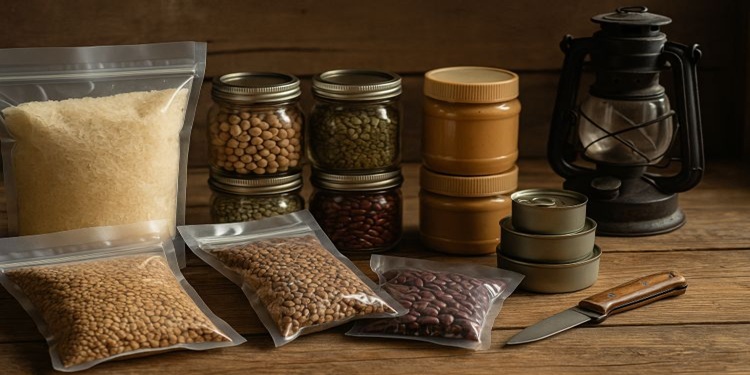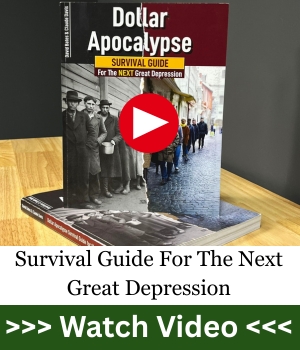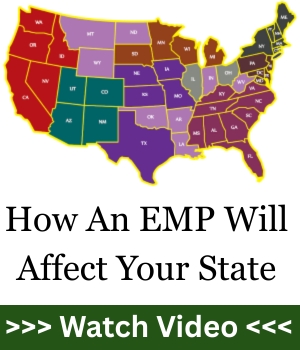Protein is survival. Without it, your muscles break down, your focus blurs, and your body eats itself alive. In an SHTF scenario, the one thing you can’t afford is weakness. But here’s the catch: high-protein diets are often sold as some luxury fitness trend—expensive powders, $10 packs of chicken breast, or “superfoods” with price tags that make you laugh. The truth? You can prep cheap, you can prep smart, and you can build a stockpile of protein-packed meals that’ll keep you alive when shelves are bare.
When you start thinking in terms of survival instead of lifestyle, the game changes. Suddenly, protein stops being about hitting gym goals or macros—it becomes about ensuring you can carry your child when the car breaks down or haul buckets of water when the grid is dead. Protein fuels the real work that survival demands.
And the good news? You don’t need a millionaire’s budget to set yourself up. The system is simple, the food is accessible, and the power comes from discipline, not dollars. Anyone can do this, and when chaos strikes, you’ll be the one who’s already fueled and ready while others are begging for scraps.
Why Protein Is Survival Currency
Forget the fad diets. Protein isn’t optional—it’s the foundation. When the grid’s down, carbs rot fast, sugar spikes and crashes, and fat storage won’t save you in the fight. But protein? That’s what rebuilds muscle after you’ve chopped wood, patrolled your perimeter, or carried water five miles because the tap went dry. In other words, protein is survival currency. Without it, you’re a sitting duck. With it, you’re a machine.
Your body burns through calories fast in a crisis, but calories alone don’t cut it. Try carrying a wounded friend after eating nothing but crackers and peanut butter—you’ll feel your strength evaporate. Protein gives staying power, stamina, and recovery. That’s the difference between collapsing halfway and making it home.
And in a survival economy, protein-rich foods become barter gold. Powdered eggs, canned tuna, even sealed packs of beans—all of these carry value when everyone else is scrambling for energy bars. By stockpiling protein wisely, you’re not just feeding your body, you’re feeding your bargaining power.
The Budget Reality Check
Here’s what the elites won’t say: prepping doesn’t have to drain your bank account. You don’t need boutique powders or overpriced “emergency ration” buckets. You need a strategy. High protein on a budget comes down to three things:
- Buying in bulk rounds—big bags, not tiny packs.
- Using long shelf-life proteins that won’t spoil.
- Learning DIY prep techniques that cut costs and extend storage.
If you’re staring at a grocery store aisle thinking “this is all too expensive,” you’re shopping wrong. The hidden gems are in the bulk bins, the wholesale warehouse, and the cheap staples tucked on the bottom shelf. That’s where your survival pantry gets built, one sack at a time.
Meal prep on a budget doesn’t mean eating garbage. It means cutting out the overpriced branding and tapping into the raw materials that last, store well, and give you protein without the markup. Forget the $5 protein bar—you can make your own from oats, peanut butter, and whey for pennies.
The Protein Rounds You Can Afford
Here’s your ammo when it comes to protein:
- Beans & Lentils: Dirt cheap, long-lasting, and versatile. Combine with rice for a complete protein.
- Canned Fish: Tuna, salmon, sardines. High protein, healthy fats, and shelf life measured in years.
- Eggs: Fresh eggs are fragile, but powdered eggs? Lightweight, cheap, and perfect for long-term storage.
- Peanut Butter & Powdered Peanut Butter: Packed with protein and fat, easy to rotate, kid-friendly.
- Chicken & Beef Rounds: Buy in bulk, cook, portion, and freeze—or pressure can for shelf-stable storage.
- Protein Powders (budget brands): Not all powders are scams. A big tub of generic whey goes a long way when stretched with oats or powdered milk.
Think of these like rounds in a magazine—cheap, reliable, and ready to fire when you need them. Each one gives you options: eaten alone, combined with others, or stretched into full meals. And because they’re all budget-friendly, you can stockpile them without draining your wallet.
Even better, most of these items are multipurpose. Powdered eggs can fuel breakfast, bulk out baked goods, or even act as a binder in survival patties. Canned fish provides direct protein and vital fats. Beans stretch every meat dish further. By knowing which rounds to keep in your pantry, you’ve got endless combinations for survival nutrition.
Meal Prep for SHTF
Meal prep isn’t about Instagram lunches in glass containers. It’s about building a battle plan. Take your proteins and break them down into rounds of meals you can rotate:
- Beans + Rice + Canned Meat: A protein-dense meal that costs cents per serving.
- Oats + Powdered Milk + Whey Scoop: Breakfast that fuels without draining your stock.
- Canned Salmon Patties: Mix with breadcrumbs and spices, fry up now, or can for later.
- Powdered Eggs + Rice + Veggies: Simple, portable, and packs a punch.
By prepping in “rounds,” you can scale up your system without burning out. One day’s work cooking and portioning becomes a week of ready-to-go meals. That saves money now and saves sanity later when the stress hits.
In a crisis, time is a weapon. Having meals already portioned and sealed means you’re not scrambling to cook from scratch while danger is outside. You grab, heat, and eat. That efficiency isn’t convenience—it’s survival.
Stretching Your Protein Dollar
The trick isn’t just buying protein—it’s stretching it. Here’s how you win:
- Mix proteins: Beans + a small amount of meat still hits your protein goals without blowing your budget.
- Cook once, eat thrice: One bulk cook feeds three days if portioned right.
- Rotate stock: Keep eating what you store and storing what you eat. Nothing wasted.
This is where smart prepping pays off. You don’t need a freezer full of steaks. You need systems that stretch one pound of meat across multiple meals. Add beans, lentils, and grains to extend your protein without diluting its power.
And by rotating your stock, you eliminate waste. You know what you have, you know how long it lasts, and you’re eating it before it goes bad. That means your dollars are never wasted, and your pantry stays combat-ready at all times.
Final Thoughts
High protein meal prep on a budget isn’t just possible—it’s essential. In a crisis, protein becomes the line between strength and collapse, between protecting your family and begging for scraps. Don’t wait for the shelves to empty. Start now. Build your rounds. Stock smart, prep cheap, and fuel your body like your life depends on it—because one day, it will.
Protein keeps you sharp, steady, and capable when the rest of the world is losing its footing. With the right prep strategy, you’re not just eating to survive—you’re eating to thrive.
Time To Act!
Here’s the ugly truth: most people who try to “stockpile food” waste half of it. They buy random cans, overpriced kits, or whatever looks good in the moment. Then it spoils, it expires, and when the blackout comes, they’re left staring at shelves of useless junk. That’s not prepping—that’s gambling.
The Bug-In Guide was built to stop that waste. Its food stockpile section shows you exactly what you need, how much you need, and how to rotate it with zero waste. Combine that with the high-protein strategies you just learned, and suddenly your pantry isn’t guesswork—it’s a survival arsenal.
When disaster strikes, you won’t be asking, “Do I have enough?” You’ll already know. Every meal will be prepped, every calorie accounted for, and every ounce of protein working for you—not rotting in the trash. Don’t leave your family’s survival to chance. Get The Bug-In Guide today and build a food stockpile that lasts, with no waste, no fluff—just survival.
You may also like:
One-Week Meal Plan From The Great Depression
Break Free from the Water Grid with Just $270 and One Hour of Your Time (Video)
5 Pressure Canned Meals in a Jar























You read my mind…the last month I’ve been diving into information about protein rich foods that are at our fingertips right now and incorporating into shtf scenarios. I’ve found lately that bags of dry green split peas might be a nugget of gold survival food . Note….i hate peas….but not now….when i was i kid i used to use them as ammo to blow through a plastic straw at my brother . At dinner i would excuse myself to the bathroom to spit cooked peas into the toilet. Thanks for sharing this article .
Many of us did that with peas, especially when frozen 🙂 Glad you found the article useful.